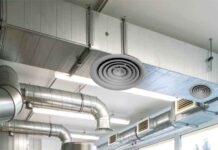
William P. Bahnfleth, professor of architectural engineering at the Pennsylvania State University and US chair for the ASHRAE epidemic taskforce, in his published research paper, ‘Fundamentals of Covid-19 Risk Management’ concludes that HVAC systems primarily reduce risk of aerosol and airborne transmission by reducing airborne concentration. And, during COVID-19 pandemic, concerning transmission of SARS-CoV-2 and the operation of HVAC systems, ASHRAE leadership approved the following two statements.
Transmission of SARS-CoV-2 through the air is sufficiently likely that airborne exposure to the virus should be controlled. Changes to building operations, including the operation of heating, ventilating, and air-conditioning systems, can reduce airborne exposures.
Ventilation and filtration provided by heating, ventilating, and air-conditioning systems can reduce the airborne concentration of SARS-CoV-2 and thus the risk of transmission through the air. Unconditioned spaces can cause thermal stress to people that may be directly life threatening and that may also lower resistance to infection. In general, disabling of HVAC systems is not a recommended measure to reduce the transmission of the virus.








